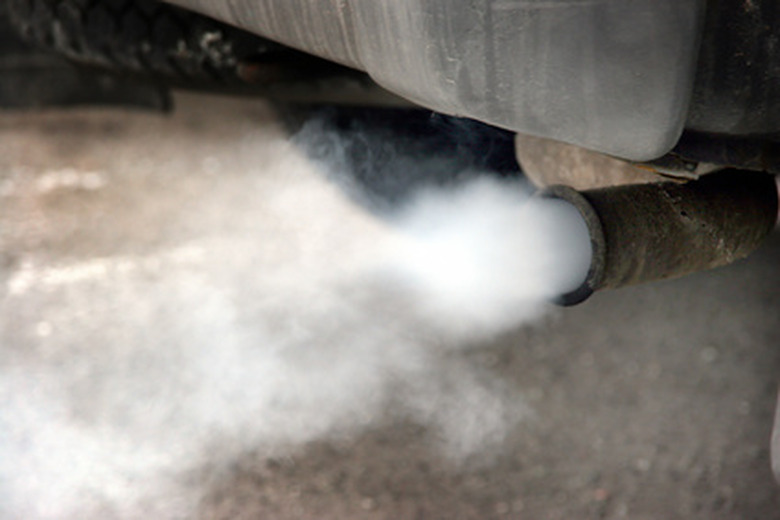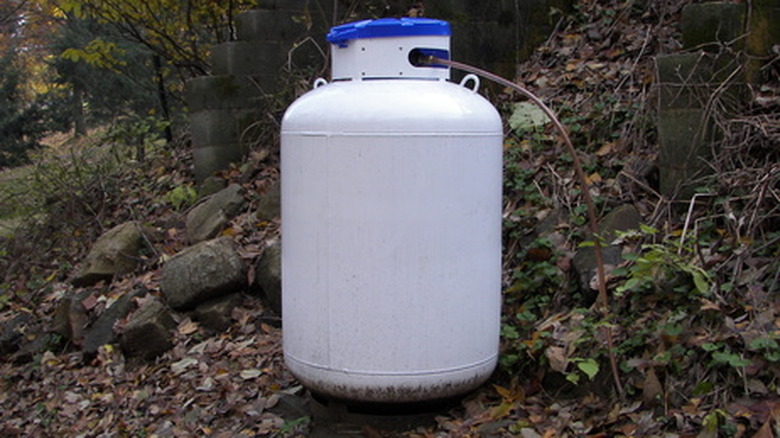Alternative Fuels Used In Vehicles
The United States consumes more oil annually than it produces, according to the U.S. Department of Energy. By exploring various options for alternative fuels, consumers can decrease environmental pollution, reduce chemical emissions toxic to humans, ease American reliance on other foreign oil and maintain current levels of Earth's natural, nonrenewable resources. The U.S. Environmental Protection Agency states that among the 50 states, California residents are the greatest consumers of vehicles running on alternative fuels. To offset the higher costs of purchasing alternative fuel vehicles, the federal government and certain state agencies have offered incentives to consumers who acquire vehicles that run on alternative fuel.
Biodiesel
Biodiesel, a type of fuel made from vegetable oil or animal fat, can power engines found in buses, boats, large trucks and power equipment. Used exclusively or blended with other diesel fuels, biodiesel originates from crops such as soybean and corn; in addition, fungi, bacteria and even algae are valuable sources of biodiesel production. Usage of biodiesel is economical for the consumer and environmentally friendly. To improve and increase biodiesel production nationwide, the U.S. government enacted the Food, Conservation and Energy Act of 2008.
Compressed Natural Gas
In the United States, one of five buses uses compressed natural gas (CNG) as fuel, states the U.S. Environmental Protection Agency. CNG comes from methane, which originates in gas wells. Vehicles fueled by CNG comprise two types: those employing CNG exclusively and dual-fuel vehicles capable of using either gasoline or natural gas. The EPA estimates that usage of CNG will significantly reduce emission of toxic gases such as carbon monoxide and nitrogen oxides. CNG is plentiful, burns more cleanly than gasoline, contributes to engine efficiency and does not pose a significant health hazard if accidentally spilled. CNG does have several disadvantages including increased costs of purchasing a vehicle that runs on CNG and more frequent stops are needed for refueling those vehicles.
Electricity
Cars running on electricity cost from $15,000 to $40,000, which is more than the purchase prices for conventional vehicles using gasoline. To mitigate the higher purchase costs, the federal government, in concert with the states, has enacted tax incentives, exemptions and reduced usage fees to those who purchase electric vehicles or EVs. At present, you have the choice to buy an EV that runs exclusively on electric power or a "hybrid" that uses both gasoline and electricity. Power plants supply the electricity to homes and businesses for distribution to the vehicles. EVs run on battery packs that transform the electricity into energy. Main advantages of purchasing an electricity-powered vehicle include decreased spending on car fuel and maintenance, increased engine efficiency, lessened incidences of vehicle rollover, and lowered toxic gas and noise emissions. EVs have drawbacks as well, including higher cost of purchase, shortened driving ranges due to battery recharging, less passenger and cargo space as a consequence of bulky batteries, and toxic battery disposal.
Ethanol
Ethanol derives from plant sources and therefore constitutes a renewable resource. Vehicles running on ethanol are not very popular as of yet because of the high cost of altering a vehicle's engine so that it can accept ethanol as a fuel and the expensive higher cost of producing ethanol. Some states such as Iowa and Nebraska have required their state-owned vehicles to use fuel containing 10 percent ethanol; however, the United States, unlike Canada and South America, has not yet embraced vehicles running on 100 percent ethanol.
Hydrogen
Of all the alternative fuels used in automobiles, hydrogen burns the cleanest. Hydrogen provides power to cars by either directly combusting in the engine or converting to electricity within a fuel cell. The wealth of hydrogen on Earth makes this element an ideal candidate for fuel use; on the other hand, in order for hydrogen to become fuel, it must be in a free form that can be used in car engines. The drawbacks of hydrogen fuel include the cost of producing it, it poses an explosive danger to vehicle passengers and it uses nonrenewable petroleum in its production.
Liquefied Petroleum Gas
Also known as propane, liquefied petroleum gas is a byproduct of natural gas production and crude oil refinement. Tanks store LPG as a liquid, and the LPG converts to a gas before use in an engine. LPG is cheaper to purchase and cleaner as a fuel source than gasoline. In the U.S., LPG ranks third only to gasoline and diesel as transportation fuel. As of 2006, about 1,200 propane dispensers already exist throughout California, reports the California Energy Commission.
Methanol
Considered the most basic alcohol because of its simple composition, methanol gives off minimal toxic fumes when burned as a fuel. Made from a variety of sources such as natural gas and wood, methanol, or wood alcohol, is energy-efficient, economical and less flammable than gasoline. Widespread use of methanol occurs in the racecar industry where methanol has replaced gasoline as fuel.
Cite This Article
MLA
Dinh, Ho-Diep. "Alternative Fuels Used In Vehicles" sciencing.com, https://www.sciencing.com/alternative-fuels-used-vehicles-7628982/. 24 April 2017.
APA
Dinh, Ho-Diep. (2017, April 24). Alternative Fuels Used In Vehicles. sciencing.com. Retrieved from https://www.sciencing.com/alternative-fuels-used-vehicles-7628982/
Chicago
Dinh, Ho-Diep. Alternative Fuels Used In Vehicles last modified August 30, 2022. https://www.sciencing.com/alternative-fuels-used-vehicles-7628982/


